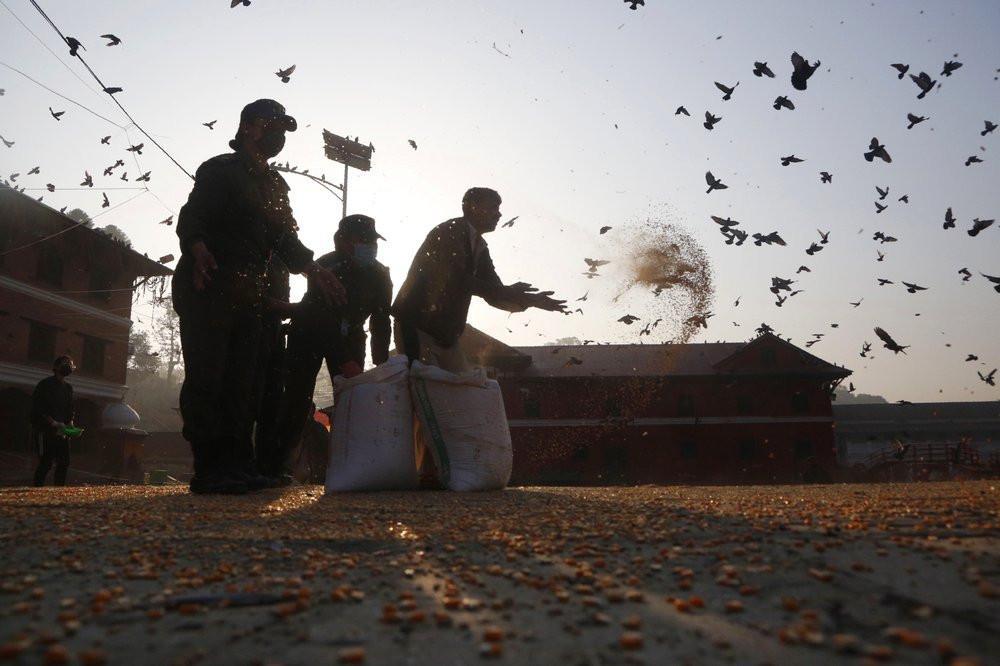
In this March 31, 2020, photo, staff from the Pashupatinath Development Trust feed pigeons at Pashupatinath temple, the country's most revered Hindu temple, during the lockdown in Kathmandu, Nepal. (AP Photo)
When COVID-19 came to Nepal, attention turned to an unlikely group of victims: hundreds of monkeys, cows and pigeons.
Normally, the animals are fed by thousands of devotees at the country’s most revered Hindu temple, Pashupatinath temple in Kathmandu.
But last month Nepal’s government ordered a complete lockdown to stop the spread of the coronavirus. People were forbidden from leaving their homes. Temples closed. And the animals risked starvation.
Now, every morning and evening, a few guards, about a dozen staff and some volunteers come out to ensure that the animals survive.
“We are trying to make sure that these animals are not starving and they are taken care of,” said Pradeep Dhakal, an official of the Pashupatinath Development Trust, which controls the temple and surrounding areas.
Nepal has nine confirmed cases of the coronavirus and one person has recovered. The lockdown, imposed March 24, banned all flights and ground transport, and closed markets, schools and offices.
It is common for devotees to feed cows, which are sacred and worshipped by the Hindus, and monkeys, which are believed to be descendants of the Hindu god Hanuman. Cows line up the path leading to the temple and the banks of the Bagmati River, while monkeys roam freely around the forested hill next to the shrine.
Dry corn is spread out on the banks of the river for pigeons while a dough is made for cows from grain. Hundreds of monkeys mostly line up to receive food from volunteers wearing masks and rubber gloves.
Each meal takes about four to six sacks of food.
The monkeys have not attacked the volunteers, said one, Nivesh Dugar. Minutes later, a large monkey snatched the plastic basket full of freshly cut-out dough.
In this difficult time, said Dugar, an environmental engineer, “we are just trying to help the animals survive.”